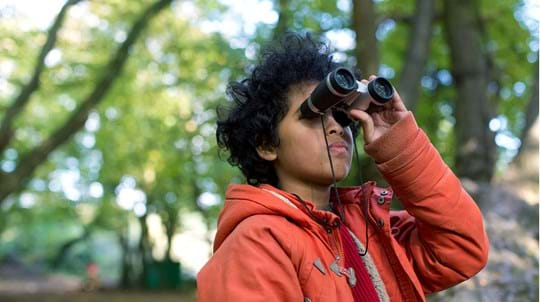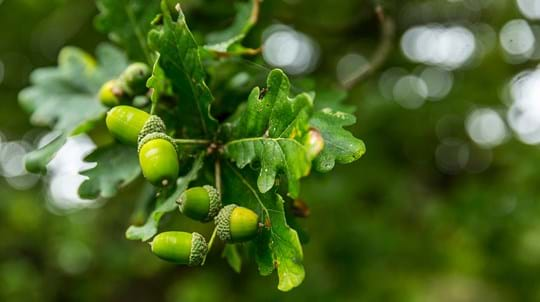
Bunkers Hill
Nr Stourbridge

Woodland Trust wood
41.55 ha (102.67 acres)
SO875824
Explorer 219
OS Landranger 139
Treating visitors to excellent views of Kinver Edge to the west and pretty countryside stretching towards Stourbridge and Birmingham to the east, Bunkers Hill is a breath of fresh air.
A wonderful network of paths, open glades and smooth terrain means this wood is accessible to all who want to explore its diverse mix of broadleaved trees and conifers, butterflies and woodland plants.
Features
- Parking nearby
- Public access
- Autumn colour
- Spring flowers
How to get to Bunkers Hill
Bunkers Hill lies around 4km (2.5 miles) west of Stourbridge, on the outskirts of Birmingham, between Whittington Hall Lane and Sugar Loaf Lane.
Head out of Stourbridge on the A458 towards Stourton. At the roundabout, take the first left and then turn left onto Highpark Avenue (B4186). Drive straight for 0.8km (0.5 miles) then take the third exit at the roundabout, onto Dunsley Road. Continue onto Gibbet Lane and take a slight left onto Whittington Hall Lane. The main entrance to the wood will be on your left.
Stourbridge Junction train station is around 3.8km (2.4 miles) from Bunkers Hill.
Visit National Rail for more information.
The nearest bus stop is on the A449 approximately two miles walk west from the main entrance. There are also stops on Shenstone Avenue and the western edge of Stourbridge which are a few miles walk from the main entrance.
Visit Traveline for more information.
Bunkers Hill can be accessed from a choice of entrance points. The main entrance is off a minor road called Whittington Hall Lane, through a kissing gate at the north of the wood (what3words location ///trimmer.cooks.comedians).
You can access the east side of Bunkers Hill via a public footpath off Sugar Loaf Lane, again through a kissing gate. There are two entrances on the west side of the wood: the first over a stile and the second through neighbouring fields.
Facilities and access
Visitors to Bunkers Hill have four entrances to choose from. The main entrance is through a kissing gate off Whittington Hall Lane. You can also enter the wood using a stile (complete with a special access gate for dogs) from the adjacent fields to the west. The third entrance – a kissing gate – can be found on the wood’s eastern boundary off Sugar Loaf Lane. The fourth entrance is a stile in the south-western-most corner of the wood, which connects to a public footpath.
You can explore Bunkers Hill using two public footpaths as well as a large network of permissive paths. The sandy, quite gravelly soils mean that many of the flatter rides are free-draining and stay relatively dry all year-round. Combined with the gentle, smooth gradient, there is great access for wheelchairs and pushchairs.
There is parking for several vehicles at the main entrance off Whittington Hall Lane.
The nearest public toilets are in Ryemarket Shopping Centre and Stourbridge Junction train station.
The Ryemarket toilets include disabled toilets and baby changing facilities and can be found behind the shop Jewellery Inspired, on the ground floor in the middle of the centre.
The Stourbridge Junction toilets can be found on Platform 2. These have RADAR access – a RADAR key is available from station staff if needed.
Wildlife and habitats
Animals
Bunkers Hill is an insect haven, with rides and glades providing valuable open space for butterflies to soak up the sunshine. Look out for comma, speckled wood, small tortoiseshell and red admiral.
There are beautiful birds to see throughout the year. In spring, blackcaps join wrens and robins in the trees, while in autumn, jays announce their presence with a loud shriek and a flash of blue as they fly between nut-caching sites. Autumn is also when fieldfares and redwings arrive to forage in the berry-laden trees and adjacent fields. Keep your eyes on the sky, too – you could see a buzzard, kestrel or sparrowhawk overhead.
Trees, plants and fungi
There are breath-taking bluebell displays at Bunkers Hill in spring, as well as fragrant wild garlic and pretty primroses. The wood is a perfect place to appreciate autumn colour as the sweet chestnut, oak and other trees tint their leaves. Interestingly, Bunkers Hill is home to an unusual range of hybrid-cultivar rhododendrons with exceptionally large, colourful flowers.
The autumn colour also includes plenty of fungi including turkeytail, yellow stagshorn, common stinkhorn, yellow brain fungus and hoof fungus.
Habitats
Despite a history as plantation woodland, Bunkers Hill retains lots of lovely broadleaved trees, including some veterans with lots of character. Some of these trees have developed holes and hollows or had limbs torn away by gusts and storms. Some have died completely, creating valuable deadwood habitats for birds, beetles and solitary wasps.
Bunkers Hill also has picturesque open glades and woodland rides that offer important feeding and basking areas for butterflies
About Bunkers Hill
History
On first entering Bunkers Hill, it’s hard to believe this thriving woodland once formed part of Iverley Heath. The wood was planted between 1860 and the 1980s, meaning any remnants of heathland vegetation are long gone and many of the planted trees have reached maturity. Some of the broadleaved trees at Bunkers Hill have regenerated naturally, while we’re carrying out specially planned restoration work to remove some of the conifers and add more native trees. This will retain the character of the mixed woodland whilst creating a more diverse habitat for wildlife.
Bunkers Hill was once used for shooting. Though controversial, we can thank this period of the wood’s history for its mosaic of habitats, the wonderful network of footpaths and large open glades.
Things to do at Bunkers Hill
Walking
The number of paths and trails at Bunkers Hill make it the perfect place for a family walk, a solo stroll or a romantic ramble. Not only that, but with so many local footpaths passing through or around the wood, there is plenty of opportunity to spend a whole day exploring the wild places just a stone’s throw from Stourbridge.
Photography
Nature photographers will be spoiled for choice here. Spring brings interesting migratory birds like pied flycatchers, autumn heralds a fungal bonanza, and winter brings atmospheric mists to the glades and rides. With such an interesting mix of trees and great views of Kinver Edge, there is plenty of inspiration in the landscape alone.

Visiting woods
Walking dogs in our woods
Dogs are welcome for walkies in our woods. Take a look at our tips and guidelines for ensuring we keep our woods safe and special for dogs and wildlife.

Visiting woods
Things to do in the woods
Go on an adventure. Get closer to nature. Uncover history. Discover ways to explore the UK's woods whatever the season.
































